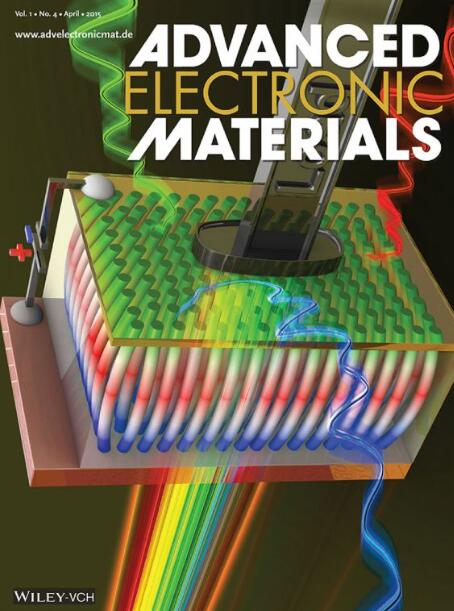Demonstration of Vertically Stacked ZnO/Te Complementary Field-Effect Transistor
IF 5.3
2区 材料科学
Q2 MATERIALS SCIENCE, MULTIDISCIPLINARY
引用次数: 0
Abstract
The complementary field-effect transistor (CFET) structure is a highly area-efficient technology. However, their fabrication entails highly complex integration processes using wafer transfer or recrystallization, which has been limiting further development. In this paper, an alternative method is proposed to realize CFETs using p-type tellurium (Te) (for the lower-level channel) and n-type zinc oxide (ZnO) (for the upper-level channel). Te and ZnO are directly deposited on a 30 × 30 mm2 SiO2/Silicon substrate, using a considerably low-temperature fabrication process (<150 °C). The lower p-type channel exhibits superior mobility exceeding 10 cm2 V−1 s−1 even after the integration of the entire CFET process. The CFET inverter demonstrates a voltage gain >51 at VDD = 4 V and noise margins of 0.36 and 0.45 V at VDD = 1 V. Using the same integration process, functional NAND and NOR logic gates are successfully demonstrated in the vertically integrated CFET structure. The proposed ZnO/Te CFET can be a promising device technology, particularly for 3D and heterojunction integration requiring a low thermal budget.

垂直堆叠ZnO/Te互补场效应晶体管的演示
互补场效应晶体管(互补场效应晶体管)结构是一种高面积效率的技术。然而,它们的制造需要使用晶圆转移或再结晶的高度复杂的集成过程,这已经限制了进一步的发展。本文提出了一种利用p型碲(Te)(下层通道)和n型氧化锌(ZnO)(上层通道)实现cfet的替代方法。Te和ZnO直接沉积在30 × 30 mm2 SiO2/Silicon衬底上,使用相当低的制造工艺(<150°C)。下p型通道的迁移率优于10 cm2 V−1 s−1,即使集成了整个cet过程。该CFET逆变器在VDD = 4 V时电压增益为51,在VDD = 1 V时噪声裕度为0.36和0.45 V。采用相同的集成工艺,在垂直集成的CFET结构中成功地展示了功能NAND和NOR逻辑门。提出的ZnO/Te CFET是一种很有前途的器件技术,特别是对于需要低热预算的3D和异质结集成。
本文章由计算机程序翻译,如有差异,请以英文原文为准。
求助全文
约1分钟内获得全文
求助全文
来源期刊

Advanced Electronic Materials
NANOSCIENCE & NANOTECHNOLOGYMATERIALS SCIE-MATERIALS SCIENCE, MULTIDISCIPLINARY
CiteScore
11.00
自引率
3.20%
发文量
433
期刊介绍:
Advanced Electronic Materials is an interdisciplinary forum for peer-reviewed, high-quality, high-impact research in the fields of materials science, physics, and engineering of electronic and magnetic materials. It includes research on physics and physical properties of electronic and magnetic materials, spintronics, electronics, device physics and engineering, micro- and nano-electromechanical systems, and organic electronics, in addition to fundamental research.
 求助内容:
求助内容: 应助结果提醒方式:
应助结果提醒方式:


